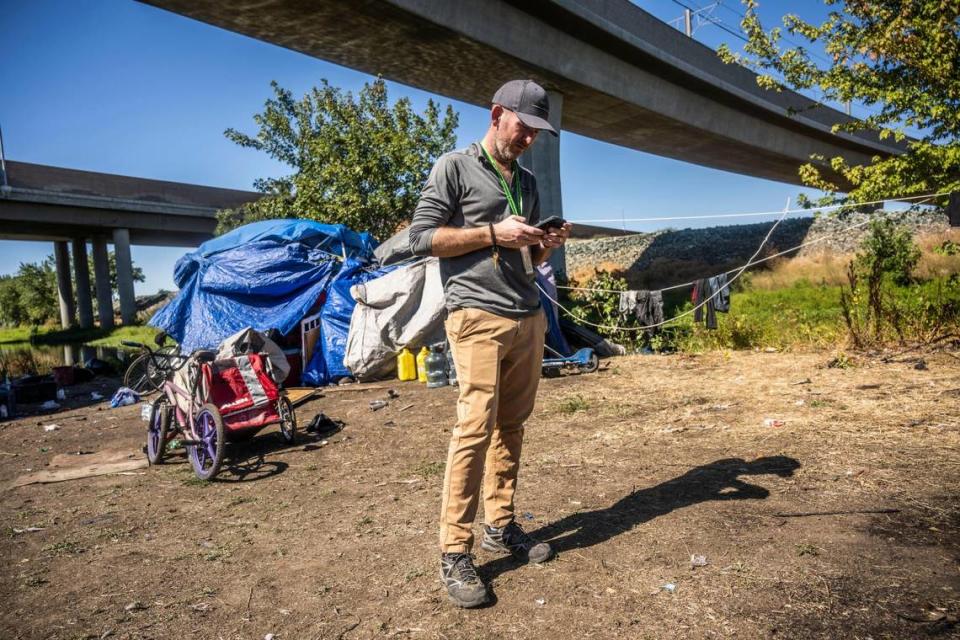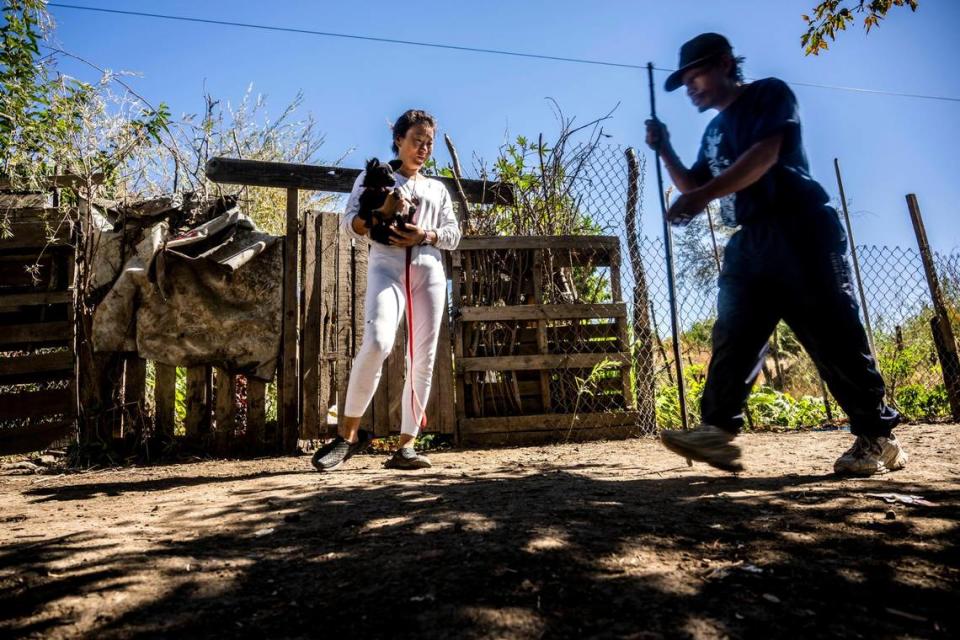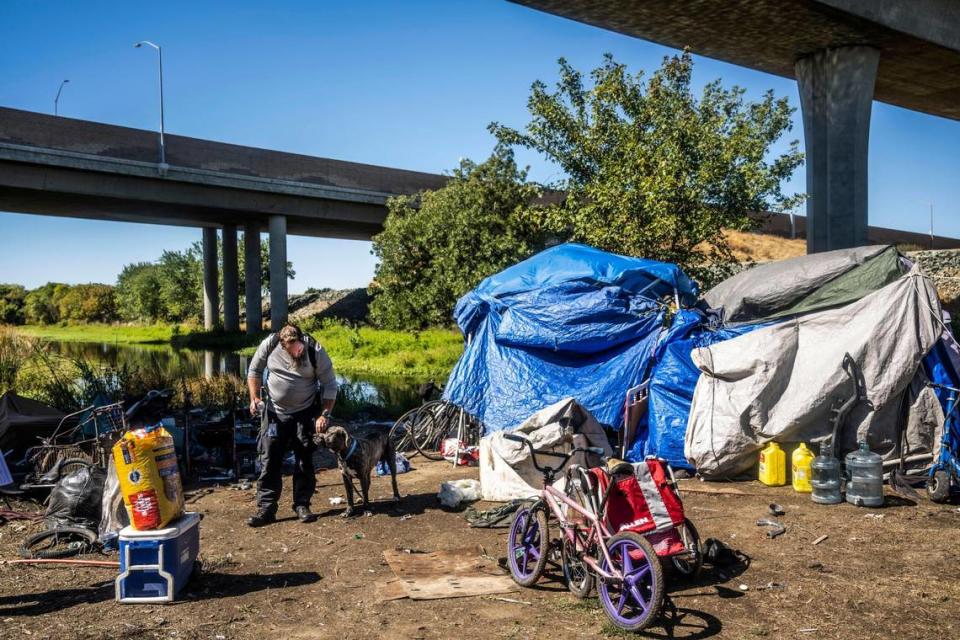Homeless immigrants have to leave south Sacramento creek, but where will they go?
The 50 or so homeless immigrants from Southeast Asia who live along Morrison Creek in south Sacramento have been here so long, raising everything from corn to cannabis, that “we don’t use the term ‘encampment,’’ says Ben Worrall, of the city’s Department of Community Response. “This is a village.”
It’s a village that will no longer exist after the Department of Utilities starts work on the levee just above the creek on Oct. 6.
That work can’t be put off any longer because it’s the levee, which these immigrant farmers have in some places flattened so they can grow more squash and sunflowers, that keeps the whole area from flooding. It’s not safe for them to be here, either, since they keep being washed out, most recently during last October’s “bomb cyclone.”
But though city outreach workers have for months been coming out to talk to those living here about where they might go, some have a hard time believing that this is really happening.
“We move out and come back in. So, nothing new,” says Kao Moua, who is from Laos. He’s wearing high rubber boots, maybe as protection against the impressive river rat that’s running around behind him in his fenced-in yard right on the water.
Opinion
When Ben asks whether he’d be open to going to a shelter, he says no. “I’m doing fine. I’ll go across the creek.” Kao won’t be able to do that because this is a major infrastructure project.
“They’ve been wiped out a few times by the canal,” and yet keep coming back, says outreach worker Nathan Cox. “They consider flooding just part of the season.”
No one wants to leave Venice just because it’s sinking, either, or New Orleans, just because it’s going to keep having to be rebuilt. And for those who live on Morrison Creek, this small strip of land at the water’s edge isn’t so different.

The city had hoped to be able to keep the community together, relocating them to some other place where they could grow vegetables and bother no one. But though they haven’t given up, working along with City Councilwoman Mai Vang, Hmong elders, Hmong Youth & Parents United and other groups, it doesn’t look like that’s going to happen.
Thirty-four-year-old Farm Chao, who was born in Thailand and prefers to be called Cindy, has been living here for the three years since she was evicted from her home. Just recently, her sister was evicted, too, and joined Cindy and her five dogs on the creek.
It’s only uncomfortable here when it rains, says Cindy, who sometimes grills fresh pumpkin leaves outside her tent. But yes, she’s willing to go to a shelter, just as soon as a bed opens up. And yes, if necessary, she’ll go without her sister: “I don’t want to be out here forever.”
The language barrier makes having difficult conversations about moving even harder. But the various reasons those living here became homeless in the first place don’t in any way set them apart.
“I’m a good dad; I raised my six kids myself,” says Pia Yaing, who is 54 and came to the United States from Laos at age 15. Four years ago, he fell into a depression, and started to lose track of things. “I lost attention to what I do,” he says apologetically, “and sometimes I’d forget to do something important.” He lost his job and then his home.

Leaving your country and everything you’ve ever known behind doesn’t necessarily enhance one’s mental health, even if the alternative would have been worse.
“After my depression, I erased some things,” Pia tells me. But then again, “this is America, and we can always find something to do.” These days, he’s trying to psych himself up: “I’ve been fooling around like this for four years, and I’ve had enough. I think I can work,” in a factory, as he always did before.
Soon, he says, he’s in any case going to live with his son. Any time at all, Nate tells him, he’ll take him for a visit or for always.
Family reunification is the ultimate goal for outreach workers, and they’re grateful that one man who left a crop of unharvested pot behind has gone to live with his daughter in Minnesota.
But if you’ve ever had a relative who might not be glad to let you and all of your problems move in with him, then maybe you can understand why that’s not a given.

This village is remarkably self-sufficient, with residents who raise frogs, fish for crawdads and even do controlled burns. In some ways, it’s a recreation of the other worlds that those living here already left.
“Send these, the homeless, tempest-tost to me,” says the well-known Emma Lazarus sonnet written in 1883, just a year after the Chinese Exclusion Act was passed. These villagers have already been twice homeless, and are about to be tempest-tost again.
When work begins, how likely is it that everyone living in this secluded spot will find an OK place to be, I ask Nathan on our way back to the city, which is just down the path and up the road, across some railroad tracks.
Not very, he says, though not because his team is giving up. “For some, this is the only refuge, the only place they feel at peace.” For some, in other words, leaving will be like immigrating all over again.

 Yahoo Sports
Yahoo Sports 